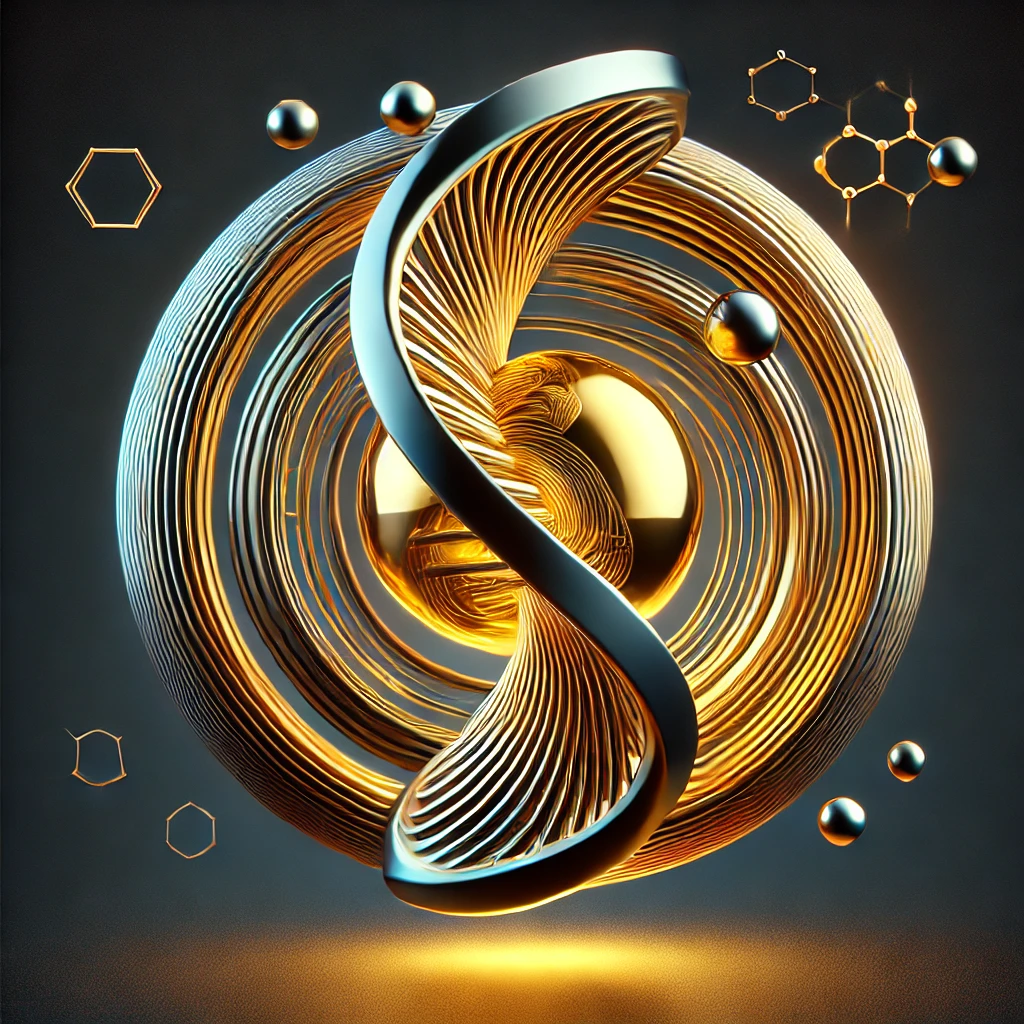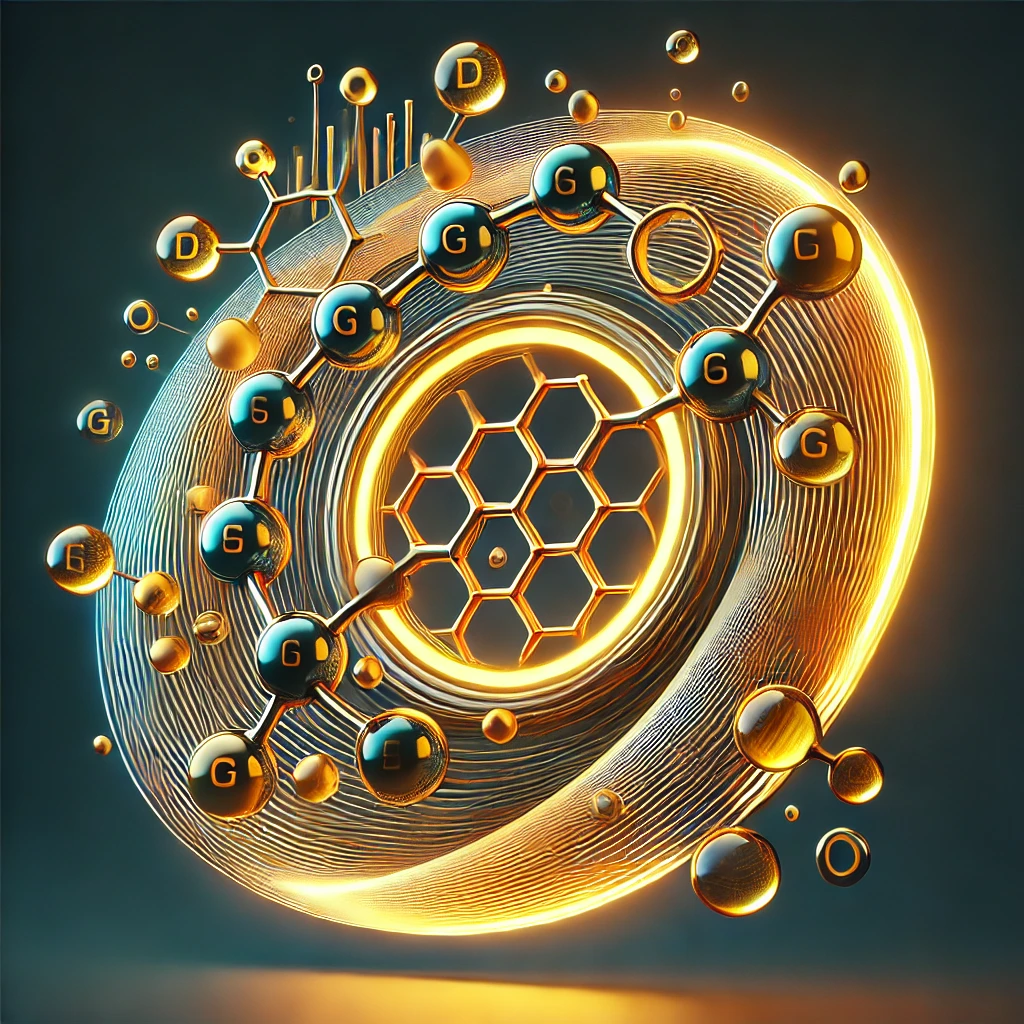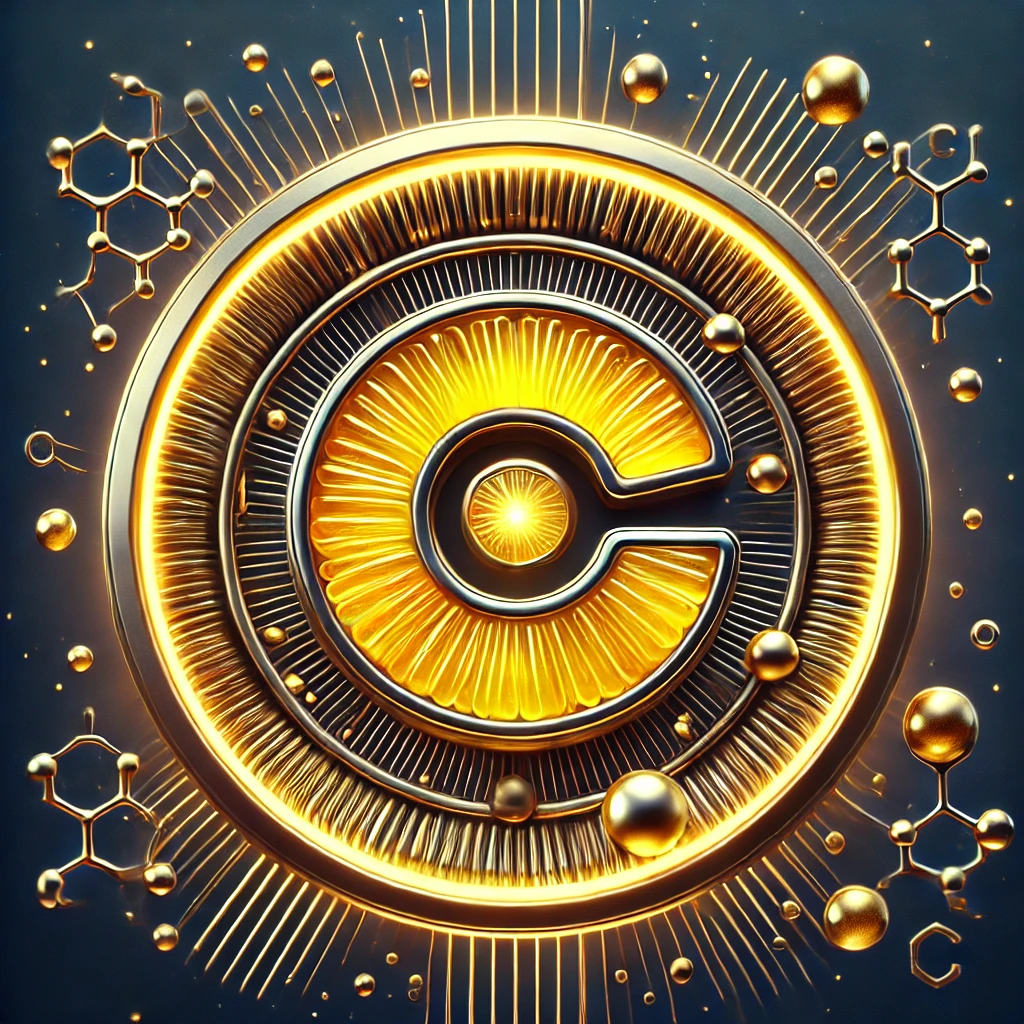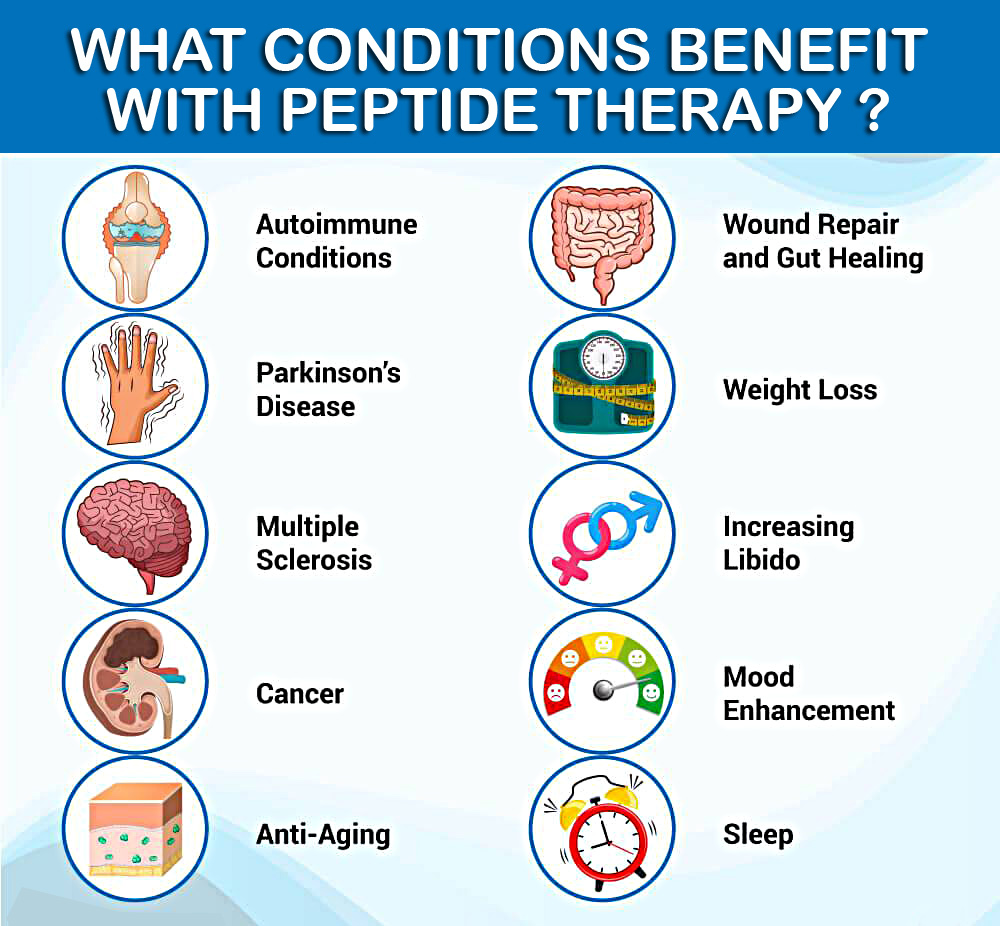IV Peptide Therapy
IV Peptide Therapy is an advanced treatment that uses specially formulated peptides to target a wide range of health and wellness goals. By directly delivering these powerful amino acid chains through intravenous therapy, the body can experience faster and more effective results. Whether you’re looking to enhance muscle recovery, improve cognitive function, or support your immune system, IV peptide therapy offers a tailored approach to help you achieve your specific health objectives. Many patients seeking specialized care visit the top therapy clinic in Rancho Palos Verdes for professional IV peptide treatments. This article examines how peptides work, the different types of therapy available, and the many benefits of incorporating IV peptide therapy into your wellness regimen.
What Are Peptides?
Peptides are short chains of amino acids that play a key role in many biological functions throughout the body. As the building blocks of proteins, peptides are made up of 2-50 amino acids and can be found naturally in foods or produced synthetically for therapeutic use. Unlike larger proteins, peptides have a more targeted action, enabling them to interact with specific receptors and influence particular processes. For example, peptides may help boost growth hormone levels in people with growth hormone deficiency, which can improve heart health and overall well-being. Because of their targeted effects, peptides are widely used in medicine, health, and wellness to support a range of functions, from hormone regulation to tissue repair.
History and Development of Peptides
The development of peptides as therapeutic agents began in the early 20th century with the discovery of insulin, a peptide hormone that revolutionized diabetes treatment. Since then, scientists have identified and synthesized a wide range of peptides, exploring their potential to address various health challenges. Today, peptides may be used to treat conditions such as growth hormone deficiency and even certain types of cancer, offering new hope where traditional therapies may fall short. The rapid advancement in peptide research has enabled the creation of highly specific treatments tailored to individual needs. To start peptide therapy, it is important to work with an expert team who can assess your health goals and design a personalized plan that maximizes the benefits of these powerful molecules.
What Is IV Peptide Therapy and Its Role in Many Biological Functions
Peptide therapy is the use of peptides to change or improve how certain parts of your body work. For instance, some athletes use growth hormone-releasing peptides to help their body produce more growth hormoneand stimulate the natural release of growth hormones. IV therapy is considered the most effective way to deliver peptides directly into the bloodstream for optimal absorption. This can help their bones and muscles recover after hard training and competing, as well as build muscle mass and promote overall body growth. These peptides stimulate the release of hormones such as growth hormone and IGF-1, highlighting the hormonal mechanisms involved in muscle growth, anti-aging, and recovery.
Peptides are strings of molecules called amino acids, which are the “building blocks” of proteins. Peptides are basically short proteins that are about 2-100 amino acids long. The type of peptide used can impact its application and effectiveness, as different types of peptides are designed for specific health goals.
Types of Peptide Therapy
There are several types of peptide therapy, each designed to target specific areas and achieve different health outcomes. Growth hormone-releasing peptides are commonly used to boost growth hormone levels, which can improve energy and support muscle development. Other types, such as melanin-stimulating peptides, help reduce signs of aging by enhancing skin tone and texture. Weight loss peptides are formulated to support fat metabolism and help control appetite, making them a valuable tool for those looking to manage their weight. Peptide therapy can also be combined with other treatments, such as hormone replacement therapy, to address multiple health concerns at once. The selection of the right peptide therapy depends on your individual health goals and the specific areas you want to target, whether it’s the nervous system, skin, or metabolic health.
Benefits of Peptide Therapy
The benefits of peptide therapy extend across many aspects of health and wellness. By helping to improve growth hormone levels, peptide therapy can lead to improved heart health, increased energy, and greater mental clarity. Peptides may also reduce inflammation, support muscle growth, and improve sleep quality, making them a versatile option for those seeking to enhance their overall well-being. In addition, peptide therapy offers promising support in the fight against cancer, diabetes, and other chronic conditions, providing an alternative to traditional treatments. The effects of peptide therapy can be both rapid and long-lasting, helping individuals achieve their wellness goals. However, it is important to note that peptide therapy should always be administered by a licensed healthcare professional to ensure safety and effectiveness, as well as to monitor for any potential side effects or interactions with other medications.

The future of peptide therapy

Limitless Charge
- Instant Energy Boost – Say goodbye to fatigue and power through your day.
- Enhanced Endurance & Stamina – Perfect for athletes, busy professionals, and high-performers.
- Mental Clarity & Focus – Eliminate brain fog and sharpen cognitive function.
- Cellular Detox & Recovery – Helps flush out toxins and optimize cellular function.
- Mood & Vitality Enhancement – Feel refreshed, recharged, and ready to take on anything.
DMSO + Trace Elements + L-Carnitine + Vitamin B12 + Peroxide + Procaine

The Wolverine
- Strengthens Immune Defenses – Shields your body from viruses, bacteria, and infections.
- Boosts Energy & Vitality – Say goodbye to fatigue and feel revitalized.
- Speeds Up Recovery – Helps your body bounce back faster from illness or stress.
- Powerful Detoxification – Eliminates toxins and oxidative stress at a cellular level.
- Cellular Oxygenation & Repair – Enhances circulation, tissue regeneration, and immune response.
Vitamin C + Vitamin B12 + Trace Elements + Glutathione + Peroxide

Inmuno Forte
- Strengthens Immune Defenses – Shields your body from viruses, bacteria, and infections.
- Boosts Energy & Vitality – Say goodbye to fatigue and feel revitalized.
- Speeds Up Recovery – Helps your body bounce back faster from illness or stress.
- Powerful Detoxification – Eliminates toxins and oxidative stress at a cellular level.
- Cellular Oxygenation & Repair – Enhances circulation, tissue regeneration, and immune response.
Vitamin C + Vitamin B12 + Trace Elements + Glutathione + Peroxide

Cell Guard
- Powerful Antioxidant Support – Neutralizes free radicals and reduces oxidative stress.
- Detox & Cellular Regeneration – Eliminates toxins and supports organ function.
- Boosts Energy & Vitality – Helps restore strength and overall well-being.
- Anti-Inflammatory Protection – Reduces chronic inflammation and promotes healing.
- Oxygenation & Circulation Enhancement – Supports cellular repair and optimal blood flow.
Vitamin C + DMSO + EDTA + Procaine + Peroxide + Curcumin

Defying Age
- Reduces Signs of Aging – Fights oxidative stress and supports skin elasticity.
- Deep Detox & Cellular Renewal – Eliminates toxins and promotes cellular repair.
- Boosts Energy & Mental Clarity – Helps restore vitality and brain function.
- Enhances Skin Hydration & Glow – Supports collagen production for a youthful appearance.
- Improves Circulation & Longevity – Optimizes blood flow and supports long-term health.
Vitamin C + DMSO + EDTA + Procaine + Peroxide + Curcumin

CerebrAI Harmony
- Boosts Mental Clarity & Focus – Say goodbye to brain fog and stay sharp.
- Supports Nerve & Cognitive Function – Aids in neurological repair and protection.
- Enhances Energy & Mood – Fights fatigue and promotes a balanced, energized mind.
- Detoxifies & Reduces Inflammation – Flushes out toxins that impair brain and nerve function.
- Improves Circulation & Oxygen Flow – Ensures your brain gets the nutrients it needs.
Vitamin B12 + Vitamin C + Glutathione + Trace Elements + Procaine + DMSO
Key Ingredients

DMSO
The ultimate detoxi er and antiinammatory powerhouse. Enhances cellular absorption, reduces oxidative stress, and speeds up recovery, making it essential for rapid healing, pain relief, and performance optimization.

Trace Elements
A precise blend of essential minerals that replenish the body’s core nutrients, ensuring optimal hydration, energy production, and immune strength. Perfect for revitalization and sustained peak performance.

L-Carnitine
The fat-to-fuel transformer! Converts stored fat into energy, boosting metabolism, endurance, and muscle recovery. Ideal for athletes, high-performers, and anyone seeking natural energy optimization.

Vitamin B12
The energy boosting brain fuel. Enhances mental clarity, endurance, and red blood cell production, combating fatigue and keeping you alert, focused, and ready to perform.

Peroxide
A cellular oxygenation booster, enhancing stamina, circulation, and immune function. Increases oxygen at the cellular level, promoting energy production and speeding up recovery.

Procaine
More than just circulatory support. Enhances mental focus, improves blood ow, and supports nerve function. It’s the secret weapon for high-achievers looking to optimize their brain and body performance.

Vitamin B6
A key player in mood balance, neurotransmitter function, and metabolic health. Supports stress reduction, nervous system health, and energy metabolism, helping you stay calm, focused, and energized.

Vitamin B-Complex
The all-in-one metabolism booster! This blend of essential B vitamins supercharges energy levels, improves brain function, and enhances cardiovascular health for total body optimization.

Glutathione
The master antioxidant that fights free radicals, detoxi es the liver, and enhances skin health. Essential for immune support, anti-aging, and long-term cellular protection.

EDTA
The heavy metal detoxi er. Removes toxic metals from the body, improving circulation, heart health, and overall detoxi cation. Perfect for those seeking total body cleansing and longevity support.

Vitamin C
The immune boosting, skinrejuvenating, in ammationghting powerhouse! Strengthens your body’s defenses, supports collagen production, and enhances energy levels, making it a must-have for wellness and recovery.

Curcumin
The ultimate in ammation ghter! Known for its powerful antioxidant and anti-in ammatory effects, supporting joint health, immune function, and brain optimization. Perfect for antiaging and cellular longevity.
Benefits Peptide Therapy
Your body makes lots of different peptides, each of which has a different role.
As people age, the natural production of certain peptides and growth factors declines, leading to increased visceral fat, cell aging, and compromised immunity. Certain peptides are responsible for maintaining or restoring vital biological processes such as telomerase production, immune response, and hormonal balance. Scientists can also make synthetic peptides in the lab. Companies have been adding peptides to skin care products for decades. For optimal results, it is important to align peptide therapy with an individual’s health goals. Certain peptides may offer the following benefits:
- Anti-Aging and Skin Health: Peptide therapy can combat the physical and biological signs of aging. Some peptides influence DNA replication and help maintain genetic information during cell division, supporting youthful skin and reducing wrinkles.
- Muscle Growth and Fat Loss: Peptides can help increase muscle mass, promote fat loss, and enhance recovery after exercise or injury. Achieving these results also depends on working out and personal dedication.
- Immune System Support: Peptide therapy can support individuals fighting illness or disease. Certain peptides help the body become more resistant to infections by strengthening immune defenses.
- Cognitive Function and Brain Health: Nootropic peptides can improve focus, memory, and mental clarity, with different ways to optimize cognitive abilities.
- Faster Wound Healing: Some peptides promote faster wound healing by supporting tissue regeneration, reducing scarring, and enhancing the healing process.
Potential benefits peptides may include:
- Anti-Aging and Skin Health
- Muscle Growth and Fat Loss
- Joint and Bone Health
- Cognitive Function and Brain Health
- Improved Sleep and Energy Levels
- Immune System Support
Safety and Efficacy of Peptide Therapy
Peptide therapy has been extensively studied for both safety and efficacy, with research showing that peptides are generally well-tolerated and effective when used appropriately. Most people experience minimal side effects, especially when peptide therapy is used in combination with other treatments under professional supervision. The success of peptide therapy depends on factors such as the specific peptide chosen, the individual’s health status, and the condition being addressed. Peptide therapy can help replenish peptide levels, reduce toxins, and improve overall health, making it a valuable addition to many treatment plans. To achieve the best results, it is essential to work with an expert team who can tailor the therapy to your needs and monitor your progress. In addition, combining peptide therapy with other approaches, such as hormone replacement therapy, can further enhance its positive effects and support your journey toward improved well-being.

Other Services We Offer:
Peptide Therapy FAQs
1. What is peptide therapy, and how does it work?
Peptide therapy involves using specific peptides—short chains of amino acids—to stimulate various biological processes in the body. These peptides can help regulate hormones, repair tissue, reduce inflammation, and support functions such as muscle growth, skin health, and cognitive performance.
2. Are there any side effects or risks associated with peptide therapy?
While peptide therapy is generally considered safe when used properly, it can have some side effects, especially if taken in excessive amounts or without medical supervision. Possible side effects include headaches, fatigue, dizziness, nausea, or reactions at the injection site
3. How long does it take to see results from peptide therapy?
The time it takes to see results from peptide therapy can vary depending on the specific peptide being used and the individual’s health condition. For example, skin improvements may be seen in a few weeks, while muscle growth or fat loss may take a few months of consistent therapy.
4. Who can benefit from peptide therapy?
Peptide therapy can benefit a wide range of individuals, including those looking to improve athletic performance, enhance muscle recovery, manage weight, support skin health, or boost cognitive function. It’s also used for those with specific health conditions, such as joint pain, chronic inflammation, or weakened immune systems

